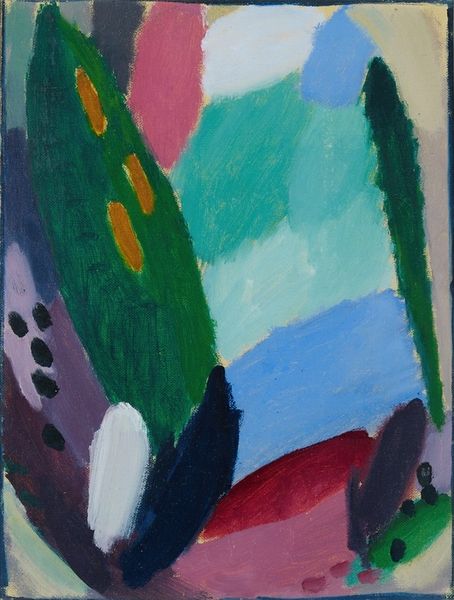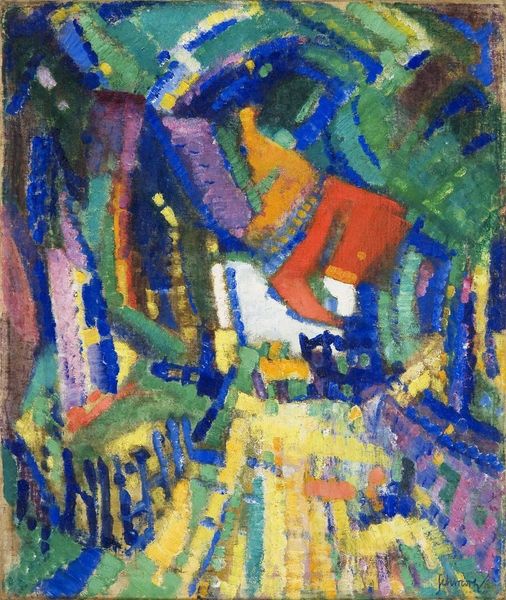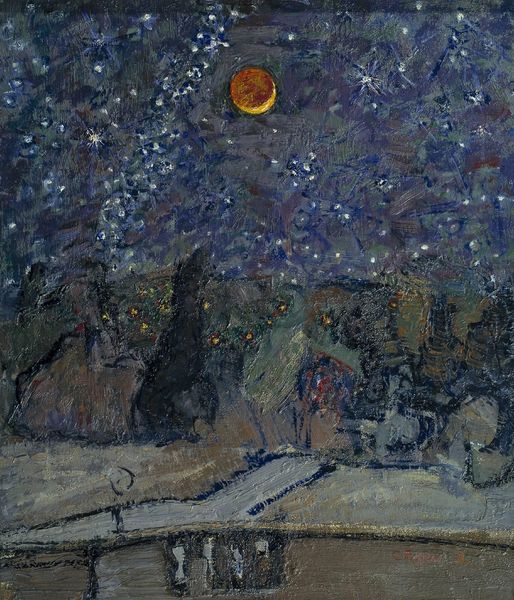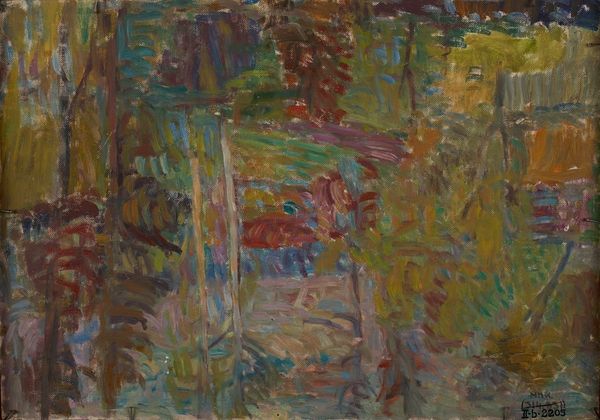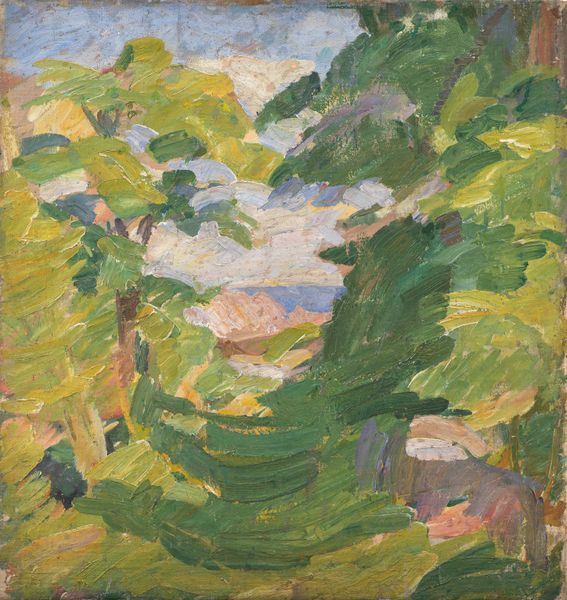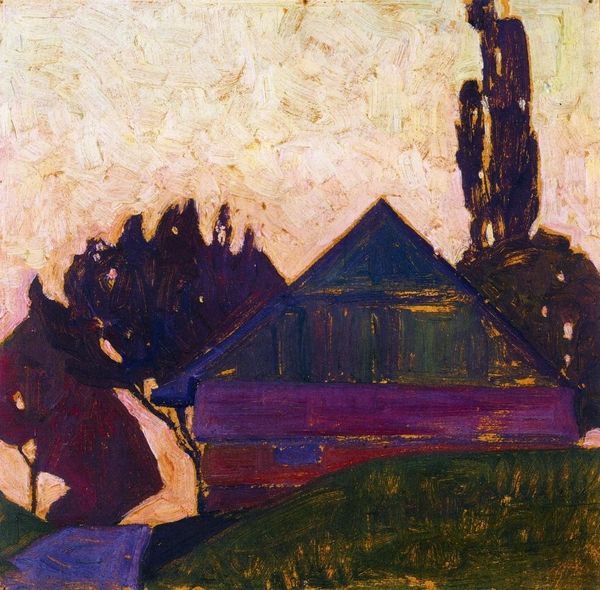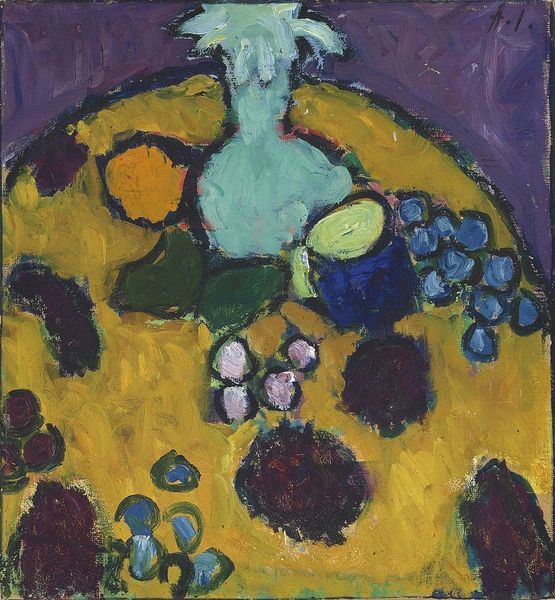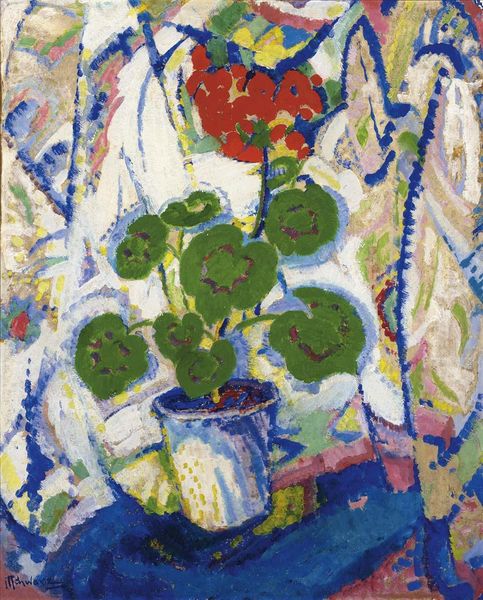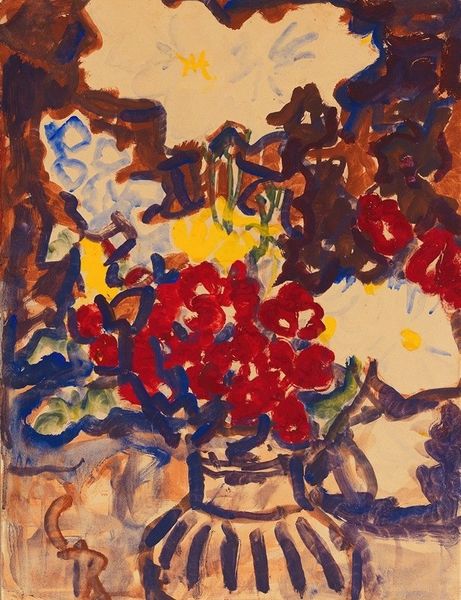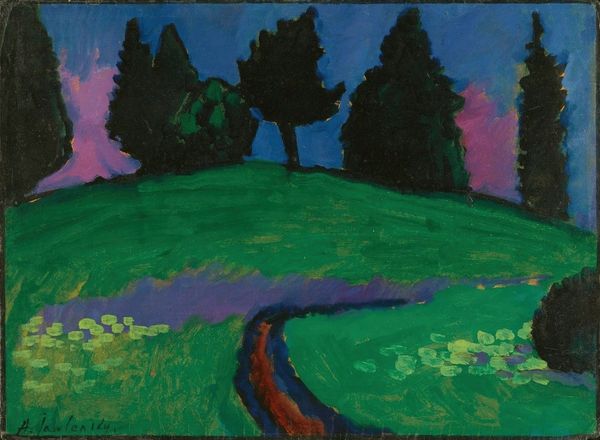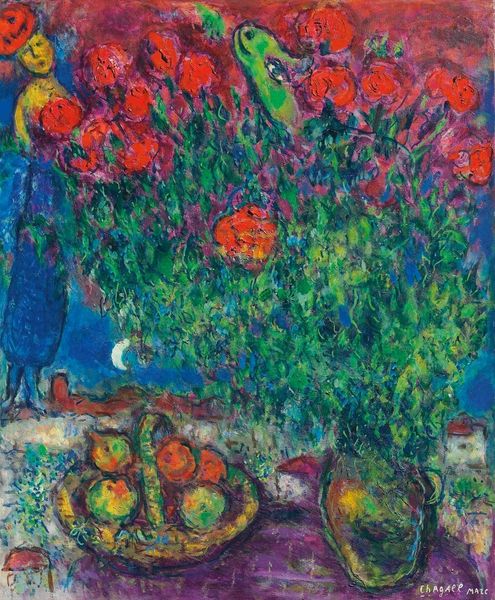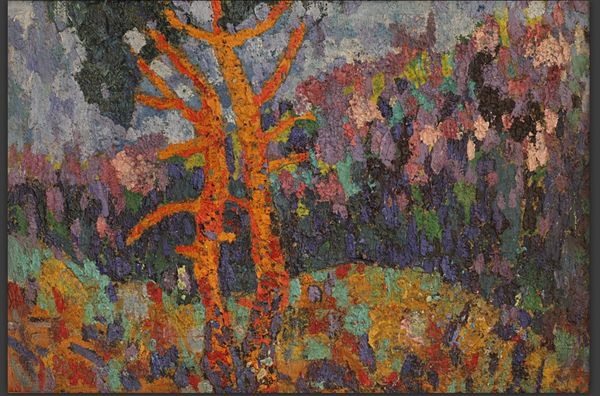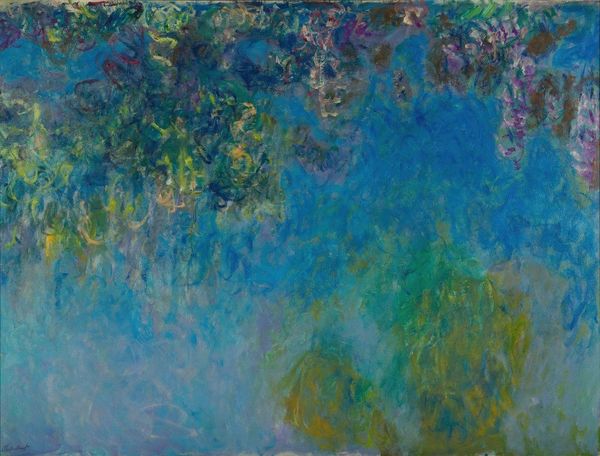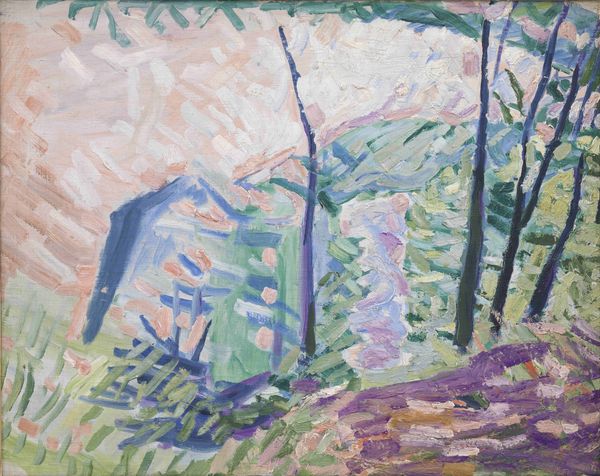
#
abstract expressionism
#
abstract painting
#
animal print
#
fluid art
#
abstract pattern
#
neo expressionist
#
acrylic on canvas
#
paint stroke
#
chaotic composition
#
expressionist
Copyright: Public domain
Curator: Robert Delaunay painted "Landscape with Disc" in 1906, and the canvas just vibrates with colour, doesn't it? Editor: It does. My first impression is one of fractured light, like staring directly at the sun, and then finding that afterimage burned into my vision. Curator: Considering the historical context, this period saw a lot of change in France, the rise of industrialization, labor movements. Perhaps Delaunay attempts to show us the fractures in our sense of what is real? Editor: Interesting! The "disc" itself definitely functions as a central symbol. Historically, the disc often signifies the sun or divinity. Given the overall composition, I read it as a symbol of distorted natural order. Curator: Yes, the composition refuses a traditional perspectival depth. He’s flattening the landscape, rejecting academic illusionism in favour of a radical visual equality across the canvas. How might we interpret the role of nature within a rapidly modernizing society? Are the colours reflective of alienation? Editor: I'd say they represent a kind of intensified seeing, perhaps a heightened awareness. The purple, greens, and blues, are not realistic depictions, of course, but do call back to traditional landscape painting, even as they reinvent it. They may even point to how nature is internalized through cultural lenses and traditions of representation. Curator: So you are seeing tradition embedded in what appears to be an explosion of new aesthetic language? Is he attempting to suggest how past traditions haunt modern aesthetic innovations? Editor: It is quite possible, yes! Considering how persistent the use of radiant solar imagery has been throughout history and across cultures, it would be difficult to say that any iteration of that symbol exists in a vacuum, absent of a long history of accumulated cultural meanings. Curator: It appears Delaunay's work transcends mere representation; he engages with discourses around how we can see, and he makes us aware of historical continuities within a field of constant and often destabilizing change. Thank you for those insightful comments! Editor: Absolutely, the exploration of enduring symbols makes Delaunay's image continually engaging across time. Thank you for having me.
Comments
No comments
Be the first to comment and join the conversation on the ultimate creative platform.
